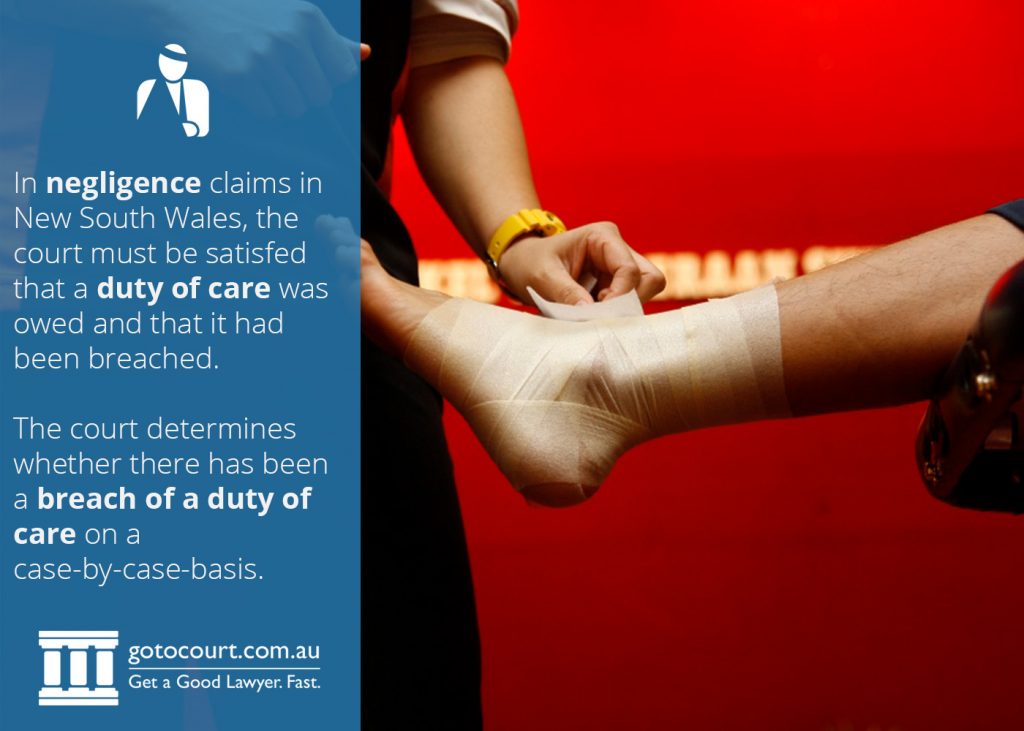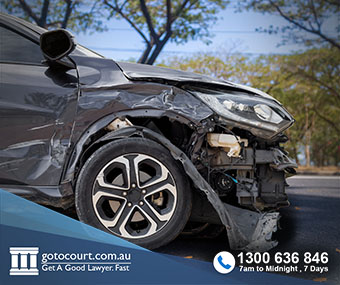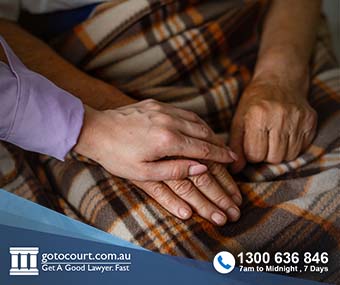Call our lawyers
now
or,
have our lawyers
call you
Negligence in New South Wales
Updated on Nov 08, 2022 • 6 min read • 3472 views • Copy Link
Negligence in New South Wales
Negligence in New South Wales was originally developed by Australian common law (also known as case law). Claims of negligence in NSW are now governed under the Civil Liability Act 2002.
What is negligence in New South Wales?
Negligence in NSW is defined in the Act as arising when a person does not exercise what would be considered reasonable care and skill.
A claim of negligence in NSW would arise when a person (the negligent party) breaches their common law duty of care owed to another (the claimant) which results in some damage or injury.
Elements of negligence
To make a claim of negligence in NSW, you must prove three elements:
- A duty of care existed between you and the person you are claiming was negligent;
- The other person breached their duty of care owed to you; and
- Damage or injury suffered by you was caused by the breach of the duty.
Duty of care
Duty of care in cases of negligence in NSW can be established through the type of relationship between the claimant and the negligent party. There are many kinds of duties of care and they can arise in many different instances.
As the common law in NSW is constantly evolving, the duty of care categories continues to grow. On occasion, the courts will find a duty of care to have existed in a previously unrecognised relationship.
The general principle of duty of care was significantly broadened by the historical English case of Donoghue v Stevenson which introduced the idea that people owe a duty of care to their neighbours.
Courts currently recognise the existence of a duty of care for the following relationships:
- doctor to patient;
- land owner to tenant;
- occupier of land to visitor;
- manufacturer to consumer;
- teacher to student;
- road user to any other person nearby; and
- employer to employee.
 What standard of care is required?
What standard of care is required?
In addition to finding a duty of care exists, that duty of care is then held to the standard of reasonableness. This means that a claimant must prove to the court that it can be reasonably foreseen that an act (or omission) could cause damage or injury to another. Because of this, the negligent party has a duty to take steps to ensure that harm does not occur.
If there is an element of danger, the person who owes the duty must perform or act to a reasonable standard. Similarly, a person must take reasonable steps to avoid harm in circumstances where a duty is owed.
A failure in either case means they have breached the duty of care.
The type of relationship between the parties determines the level of responsibility of the person owing the duty of care. Take the relationship between teacher and student, for instance. The standard of care the teacher owes is what would be expected of a reasonable teacher having the same qualifications and experience in the same circumstances.
The court determines whether or not the person’s conduct met the standard of care based on the facts of the particular case.
Breach of a duty of care
When the standard of care has not been met a breach of a duty of care will arise.
In case of negligence in NSW, a breach of a duty of care occurs if the claimant can show:
- There was a substantial or ‘not insignificant’ risk of harm; and
- The negligent party knew, or ought to have reasonably known the risk of harm; and
- A reasonable person would have taken precautions against the risk when faced with the same circumstances.
The court will determine whether there has been a breach of a duty of care on a case-by-case basis.
In deciding if a reasonable person would have taken precautions, the court considers the following:
- The likely severity of any harm or damage;
- The level of difficulty taking measures to avoid the harm would have been;
- The probability of the harm if the person did not take care; and
- The social benefits of the activity that created the risk of harm.
The harm that results from the breach
There must have been harm caused to the claimant for the breach of a duty of care owed. This is an essential element to claims for negligence in NSW.
Harm under the Act includes all forms of injury or loss, including:
- Personal injury or death;
- Damage to property; and
- Economic loss, both past and future.
The claimant must have been the one to have suffered the harm. They must also be the person to lodge the claim or have the claim lodged on their behalf.
For example, in a doctor and patient relationship, the harm must have been caused to that patient and not, for instance, to the patient’s child.
Making a claim of negligence
A claim for negligence can be made by any person who has suffered some kind of harm or damage caused directly by a breach of a duty owed to them.
A claim for negligence is made by making an application to a court. The specific court to apply to depends on the details of the claim.
If you are wanting to lodge a claim of negligence in NSW, you should seek legal assistance to make the application.
Compensating for negligence
If you have suffered harm as a result of negligence in NSW, the court can award compensation to you.
The amount of compensation (or damages) paid will depend upon the specific facts of the case.
Compensation is determined by the court using the following factors:
- The amount of financial loss suffered;
- The extent of any personal injury;
- The ongoing effects of the loss or injury on the person’s future ability to earn income; and
- How much damage was caused to any personal property and the type of personal property damaged (whether it is unique or replaceable).
The person who experienced harm must also have taken reasonable steps to prevent the harm occurring. These means they must have taken minimum precautions to reduce the degree of harm suffered.
If a person has contributed to the harm suffered the amount of compensation can be reduced. This is called contributory negligence. Whether a person has contributed to their own harm will be dependent on the facts of the case.
If there is a continuing breach of a duty of care, the person suffering might be able to obtain an injunction. Injunctions act to prevent the negligent party from continuing to engage in the conduct.
Time limits
If you wish to make a claim for negligence in NSW, you must commence the action within 3 years from the date the negligence occurred. This time limit is found under the Limitation Act 1969.
You cannot bring an action of negligence in NSW until all of the elements are satisfied. This means that the damage caused by a breach of a duty of care must have already occurred.

Affordable Lawyers
Our Go To Court Lawyers will assist you in all areas of law. We specialise in providing legal advice urgently – at the time when you need it most. If you need a lawyer right now, today, we can help you – no matter where you are in Australia.How It Works







1. You speak directly to a lawyer
When you call the Go To Court Legal Hotline, you will be connected directly to a lawyer, every time.


2. Get your legal situation assessed
We determine the best way forward in your legal matter, free of charge. If you want to go ahead and book a face-to-face appointment, we will connect you with a specialist in your local area.


3. We arrange everything as needed
If you want to go ahead and book a fact-to-face appointment, we will connect you with a specialist in your local area no matter where you are and even at very short notice.

 What standard of care is required?
What standard of care is required?



















